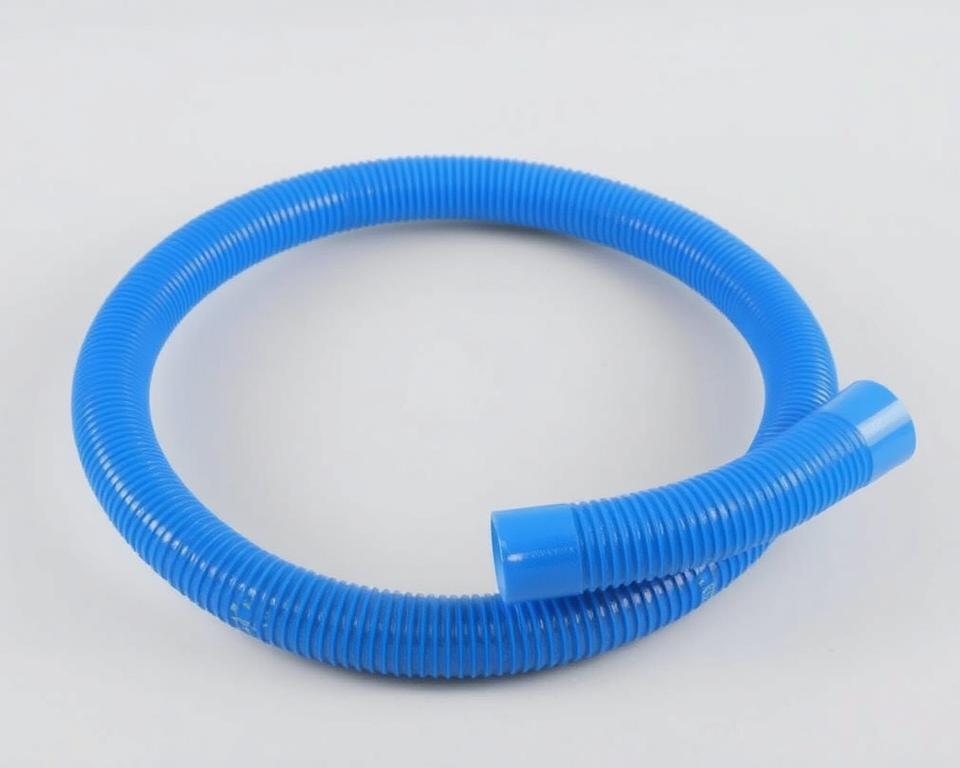PVC Pipe for Air Compressor Lines: Your Complete Guide
Did you know that a ruptured compressed air system can release energy equivalent to a stick of dynamite? Countless operations remain oblivious to the risks of certain piping systems they employ. This guide explains why safety should come first when using PVC air hose.
Although some plastics gain popularity, OSHA flatly forbids their above-ground application. Repeated contact with compressor oil and thermal cycling makes them brittle, causing explosive failures. Safe-rated pressures can still result in deadly bursts.
For reliable alternatives, Installation Parts Supply offers durable solutions like aluminum. Spending on the right materials prevents OSHA penalties and protects employees. Discover steps to construct a secure system.

Critical Points
- Explosion danger leads OSHA to outlaw some pipe materials.
- Pressure ratings drop as temperatures fluctuate.
- Brittleness worsens over time, increasing failure risks.
- Switching to aluminum vastly improves safety.
- Spending on correct materials avoids penalties and injuries.
Why You Shouldn’t Use PVC for Compressed Air
PVC makers caution never to employ it in high-pressure air setups. Unlike water, compressed air stores explosive energy—a ruptured line can release force comparable to dynamite. This makes material choice critical for safety.
- Brittleness: Sub-freezing temperatures turn materials brittle, increasing fracture risks.
- Adhesive failures: Temperature changes and oils cause adhesive joints to fail.
- Misleading ratings: Most shops run above 110°F, slashing rated pressure in two.
OSHA cites a $110,000 fine after a facility’s piping shattered, injuring workers. Don’t forget, compression heat cuts into rated safety margins.
“Above-ground use of certain plastics for compressed air violates OSHA standards due to explosion risks.”
Steel and aluminum curve under stress instead of shattering. Plastic shrapnel from explosive failures can travel over 50 feet, embedding in walls or equipment.
Daily heat and cold cycles in a workshop degrade plastics rapidly. A decade’s UV and chemical attack weakens plastic, so small leaks too often balloon into disasters.
Safe Alternatives to PVC Pipe for Air Compressor Lines
Aluminum air lines deliver superior safety and leak reduction. They leak 90% less than black iron, making them ideal for today’s shops. Their lightweight design and corrosion resistance make them ideal for long-term use.
Threadless modular aluminum assemblies speed assembly. Installation Parts Supply stocks ready-to-snap aluminum modules. A Midwest auto plant cut labor costs by 40% after switching to this system.
- Copper: Copper’s antimicrobial action suits it to cleanroom air lines. Requires soldering expertise.
- Stainless Steel: Stainless steel stands up to salty, moist conditions.
- ABS/HDPE: Chemical-resistant for labs and factories handling solvents.
“Our aluminum retrofit reduced energy waste by 15%—paying for itself in 18 months.”
Torque matters. Too tight splits fittings; too loose lets air escape. Stick to recommended 25–30 ft-lb torque for aluminum.
Use NSF-certified materials when air quality is critical. Always match materials to your environment’s demands.
How to Choose the Right Piping Material for Your Needs
Selecting the best material for your setup requires balancing cost, safety, and efficiency. One plant slashed $12k per year by adopting aluminum lines. Here’s how to make the right choice.
| Material | Cost (per ft) | Maintenance | ROI Time |
|---|---|---|---|
| Aluminum | $8.50 | Low | 18 months |
| Black Pipe | $5.00 | High | N/A |
| Copper | $10.20 | Medium | 24 months |
Temperature matters. Plastics fail under 32°F; aluminum works from -40°F to 200°F. Stainless steel stands up to harsh chemicals.
Pro Tip: Compute ROI based on compressed-air leakage. Don’t let 10% leakage cost you $3,500 a year.
- Don’t undersize—pick pipe rated at or above your compressor’s PSI.
- Verify your system meets OSHA welding and pressure-test rules.
- Get a complimentary piping audit from Installation Parts Supply.
“Our aluminum retrofit cut energy waste by 15%—paying for itself in 18 months.”
Hire pros for big installs to guarantee airtight connections. Don’t forget to read the fine print on warranty lengths.
To Conclude
Smart material selection protects life and wallet. Studies show 92% of failures happen in older systems, often with dangerous results. Pick aluminum for near-perfect reliability.
Don’t forget:
- Say no to plastics that can explode.
- Opt for corrosion-resistant metals like aluminum or stainless steel.
- Non-compliant systems risk OSHA fines and insurance issues.
Time to make the switch? Get instant quotes and special offers from Installation Parts Supply. Access a complimentary maintenance template or request urgent replacements.
Commit to safer piping today—your team’s safety depends on it.
